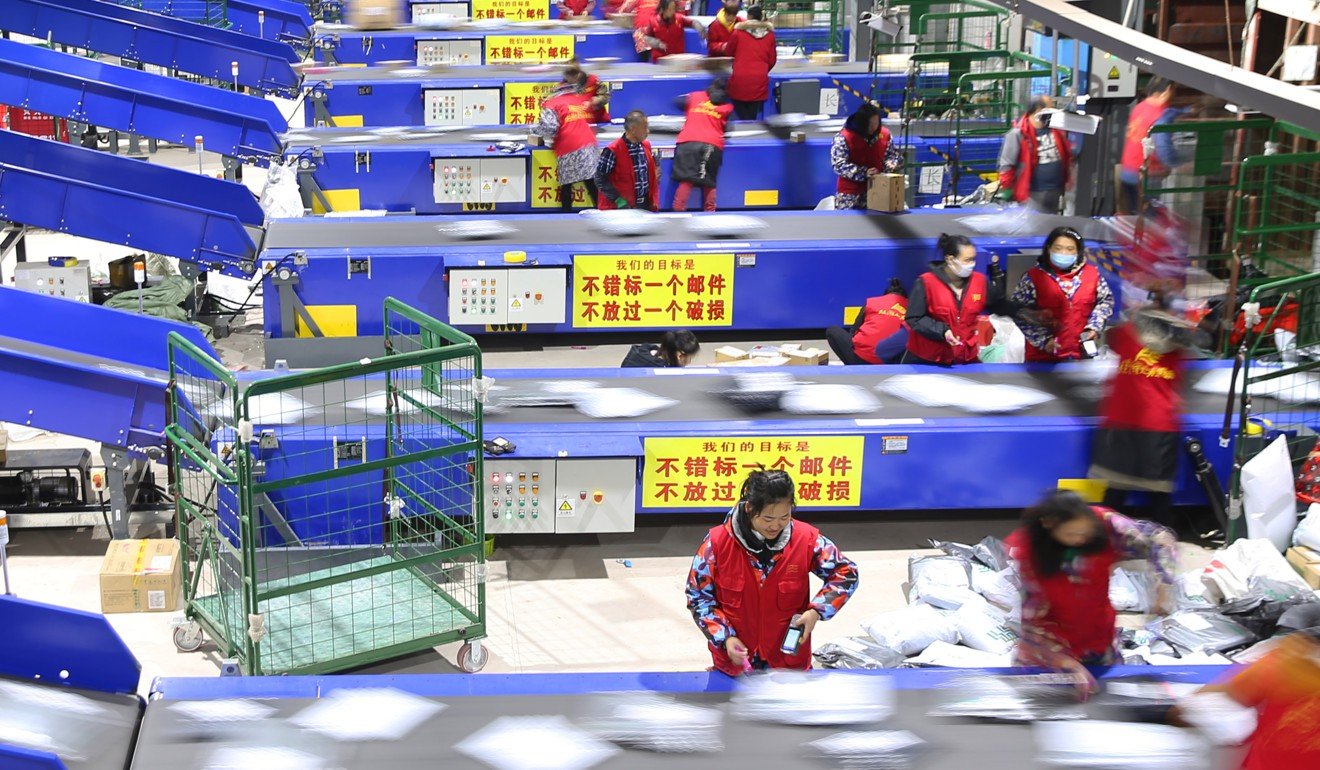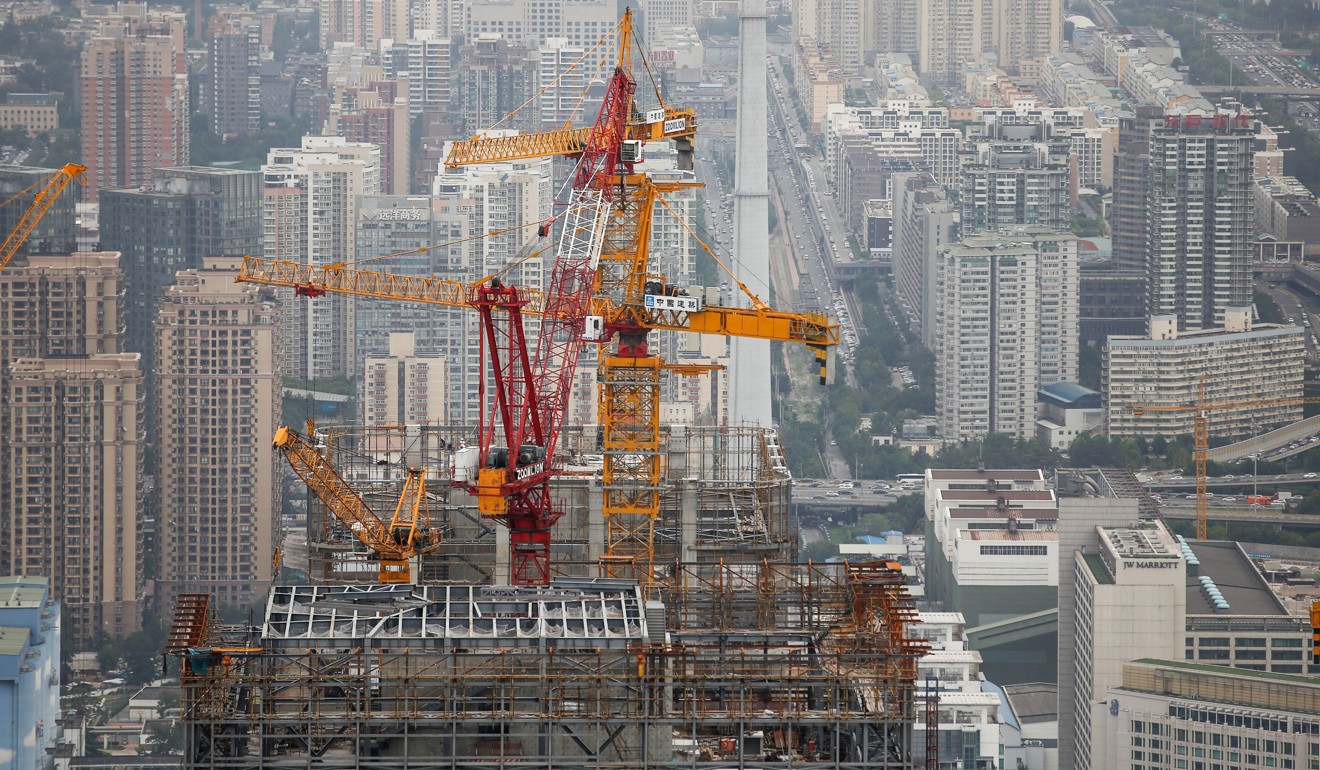
China data shows economic growth slowing as impact of trade war with US intensifies
- Year-on year car sales down by 11.7 per cent as consumer confidence drops
- Real estate, e-commerce and electronics sectors suffer weaker demand
The latest economic data adds weight to the argument that the slowdown in China’s economy is getting worse as the trade war with the United States dampens consumer confidence and hurts sales of goods such as cars and electronics.
The figures suggest there is growing economic pressure on China to seek a deal to end the trade war when Chinese President Xi Jinping and US President Donald Trump meet on December 1 in Argentina. However, it is unclear that this economic pressure will prompt Xi to offer sufficient concessions to reach a deal to end the trade war.
Analysts said that Xi and Trump could agree a “ceasefire” so that an increase in US tariffs scheduled for January 1 would be put on hold.
Chinese economic growth slowed in the third quarter to its lowest in 10 years, while data from October – the first month of the fourth quarter – indicated that economic growth had slowed further.
A slowdown in car sales, property, and consumer electronics was recorded in October. Total vehicle sales dropped 11.7 per cent from a year earlier to 2.38 million last month in the world’s biggest auto market, according the China Association of Automobile Manufacturers this month.
Real estate floor space sold in square metres, a proxy for property sales volume, fell by 3.1 per cent year-on-year in October, according to the National Bureau of Statistics. The bureau defines real estate as residential, office, and commercial property, with residential property accounting for more than 85 per cent of the total.
In the third quarter of this year, China shipped 100.6 million smartphones, down 15.2 per cent on the same period a year earlier, research firm Canalys reported.
“China’s market showed no improvement in terms of smartphone sales, and 14 of the top 20 brands in China declined in the third quarter,” said Mo Jia, an analyst at Canalys.

“Chinese vendors are more focused than ever on overseas expansion in South Asia, Africa, and Central and Eastern Europe, to hedge against their [slowing] business at home. But the current international trade environment and geopolitical issues are not great for business either. Only a few are likely to survive the tough winter,” Mo said.
China’s biggest e-commerce firms – Alibaba and JD.com – are under pressure from slower consumer demand.
Alibaba, which owns the South China Morning Post, set a sales record 213.5 billion yuan (US$30.8 billion) during Singles’ Day on November 11, a 27 per cent increase compared to the same day last year.
Despite its Singles’ Day success, Alibaba revised down its full-year revenue estimate, and said earnings would be 4 per cent to 6 per cent lower than projected.
JD.com reported that sales rose 25 per cent in the third quarter, the lowest quarterly growth rate since its public listing in May 2014, according to analyst Johannes Salim.
“We note that general merchandise sales was the driver for the third quarter slowdown [at JD.com]. This implies that consumer electronics, including home appliance sales, grew by only 16 per cent year on year, indicating consumer durables consumption is taking a much harder hit due to the consumption slowdown,” said Salim.
Meanwhile, China’s imports of integrated circuits, chips that go into smartphones, computers and other electronic devices, as well as high-end industrial and military products, have also slowed. China imported US$29.18 billion worth of integrated circuits in October, down 16.4 per cent from September. Integrated circuits are among China’s top imports along with crude oil, iron ore and cars.
Slow spending during China’s biggest holiday week of the year has revived concerns that Beijing may find it hard to rely on consumers to bolster growth amid an intensifying trade war with the US.
Consumer spending during this year’s week-long National Day break in early October grew at the slowest pace since the Golden Week holiday system began in 2000.
Le Xia, chief economist for Asia at BBVA Research, said while China’s consumers are shifting their spending to services such as education and entertainment, their confidence has been dampen by the trade war with the US.

“In China, property isn’t included in the category of consumption. It is included in investment. But it is true that the typical durable consumption, including auto, smartphones, home appliances and so on, has slowed significantly,” said Le.
“Certain cyclical factors such as the trade war threat and domestic slowdown have also led to the slowdown [in sales] of consumer durables. In particular, consumer durables consumption is directly related to consumer confidence, which has been seriously dampened by the trade tensions between China and the US.”
And there are no signs that consumer confidence will pick up soon, giving expectations that the trade war could escalate at the beginning of the new year.
Louis Kuijs, head of Asia economics at Oxford Economics, expects the US to follow through with the plan to raise the tariffs it imposed in September on $200 billion of Chinese imports to 25 per cent in January, and for China to retaliate by raising tariffs to 25 per cent on $80 billion on US imports.
His growth forecast for 2019 Chinese gross domestic product is 6 per cent and for 2020 it is 5.7 per cent.
These figures are 0.6 percentage point lower for 2019 and 0.8 percentage point lower for 2020 because of expected impact of the trade war if it is not resolved.
“We expect real estate activity to cool further, as sentiment softens and support from the scheme to renovate shanty towns declines. In this setting, consumption should be subdued as well,” said Kuijs in a note.

